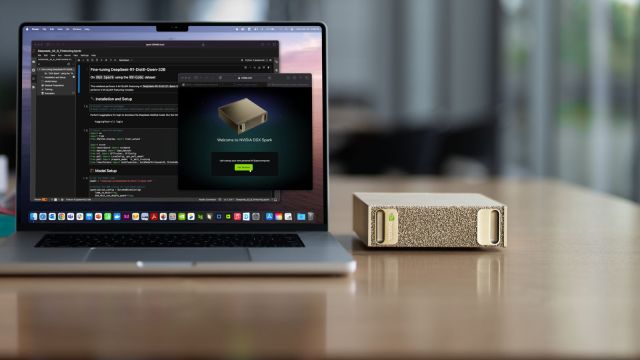Nvidia DGX Spark, the world’s smallest AI supercomputer, to go on sale from October 15
According to Nvidia, DGX Spark can handle AI models with up to 200 billion parameters and achieve a petaflop of AI performance
 Since Nvidia has stated that third-party manufacturers are free to create their own versions of Spark, we can anticipate seeing some comparable devices available on the market. (Image: Nvidia)
Since Nvidia has stated that third-party manufacturers are free to create their own versions of Spark, we can anticipate seeing some comparable devices available on the market. (Image: Nvidia)American tech company Nvidia will roll out the DGX Spark ‘Personal AI Supercomputer’ on October 15. The compact machine is designed to fit on a desktop, enabling users to work on sophisticated Artificial Intelligence (AI) models.
Starting Wednesday, DGX Spark — the world’s smallest AI supercomputer — will be available for purchase online at nvidia.com and from select partners and retailers across the United States. Nvidia has announced that the price of the DGX Spark will be $3,999 (approximately Rs 3,55,106), although earlier speculations suggested a price of $3,000 (around Rs 2,66,396).
The majority of PC manufacturers offer their own customised supercomputer models, and the Acer Veriton GN100 is a comparable option at the same price of $3,999.
Nvidia CEO Jensen Huang stated that “putting an AI supercomputer on the desks of every data scientist, AI researcher, and student empowers them to engage and shape the age of AI”. Huang originally announced Spark (then known as Digits) earlier this year.
Spark provides performance that was previously only achievable with costly, high-energy data centres. Researchers would find it quite useful, and it might even help democratise AI.
Since Nvidia has stated that third-party manufacturers are free to create their own versions of Spark, we can anticipate seeing some comparable devices available on the market.
Nvidia has said that Acer, Asus, Dell, Gigabyte, HP, Lenovo, and MSI will all be releasing their own customised versions of Spark.
Spark has up to 4TB of SSD storage, 128GB of unified memory, and Nvidia’s GB10 Grace Blackwell Superchip.
According to Nvidia, it can handle AI models with up to 200 billion parameters and achieve a petaflop of AI performance, or a million billion calculations per second. Additionally, it is compact, fits neatly on a desk, and can be powered by a regular outlet. It is referred to by Nvidia as “the world’s smallest AI supercomputer.”






